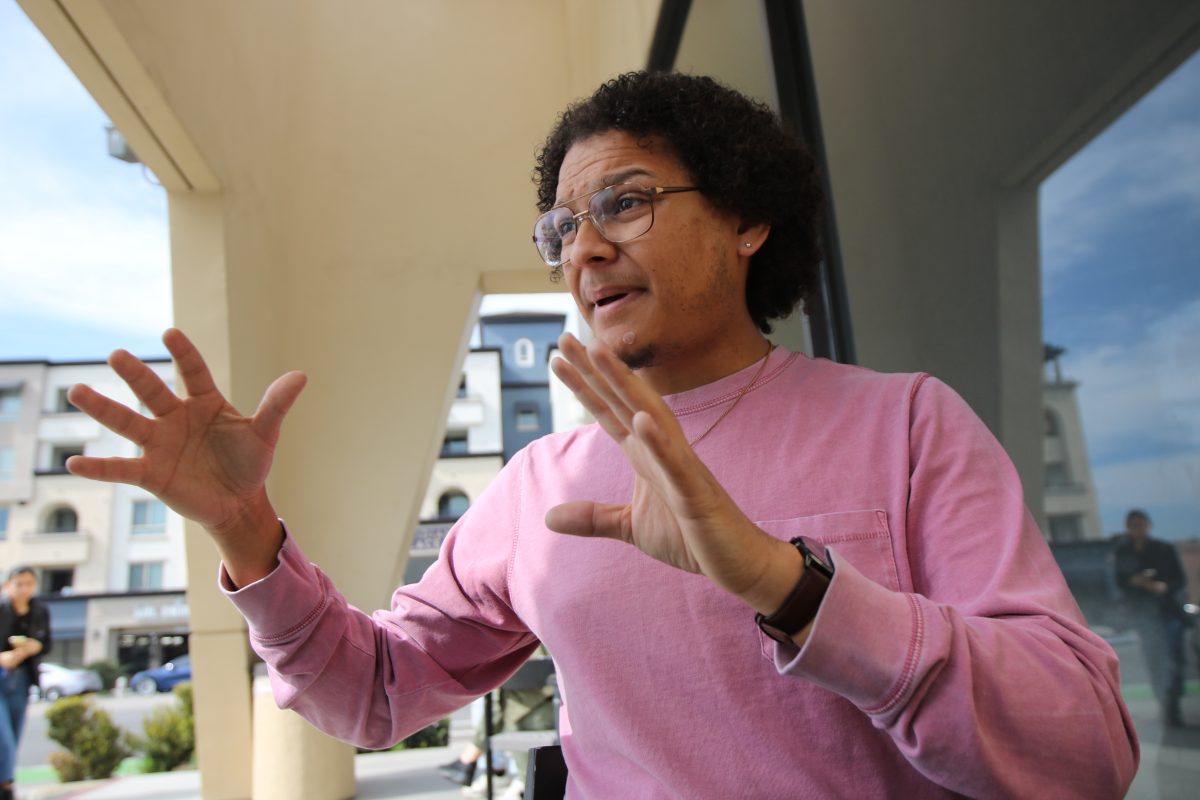
With the growing popularity of smartphones, some universities in the United States are incorporating cellphone use into class curricula, moving past online courses.
A survey done by Ball State University found that 99.8 percent of college students own a cellphone and 27 percent of those are smartphones – compared to the national average of 19 percent. Ball State’s associate journalism professor Michael Hanley conducted 11 surveys between 2005 and 2010.
“I actually think the whole movement around hybrid learning is probably where it’s going, and where we’re seeing the most academic progress,” said Themy Sparangis, chief technology director at the Los Angeles Unified School District.
The 2010 U.S. Census found that 68.7 percent of households have computers with Internet capabilities, while a study done by the Pew Research Center in 2011 found that 83 percent of adults have a cellphone.
“I think that a phone would be better (than Internet-based learning) because we’re moving more towards a mobile society in which cellphones are more common than computers,” said Markus Bean, CSUN senior in criminology.
In the fall, 100 CSUN students voluntarily answered survey questions through a link posted on Facebook discussing cellphones in the classroom. Of these students, 49.5 percent said they use their cellphone everyday in class, with only 4.1 percent saying never.
With such frequent cellphone use, often secretive and under the table, teachers are re-evaluating bans on cell phones and laptops, opting to incorporate them through apps and text-based communication, according to an article in Educause, a quarterly educational advocacy publication.
Some schools, such as Indiana University, have begun to slowly integrate mobile phones into curriculum, though usually on a class-by-class basis.
“Students, in their personal lives, interact with (technology) all of the time, whether it’s through Facebook or text messaging or something else,” Sparangis said. “The virtual environment already exists in their personal lives.”
The New York Times learning network offers a lesson plan on how to incorporate phones in the classroom in different subject areas. For writing, the lesson plan suggests a popular Japanese form of mobile storytelling called keitai shosetsu, which gives students a limited number of characters to write installments of stories, which can be uploaded on various websites. Among other suggestions for activities, the lesson plan includes mobile surveying, in which the students can create a current events survey and have classmates respond via text.
For students with smartphones, apps can also help students in the classroom.
“If I had a voice recorder or if I had an app that automatically typed everything out for me and I didn’t have to use paper or something, I think that would be more beneficial,” said Kristin Acosta, a junior in CSUN’s deaf studies program.
Most smartphones have a voice-record option and there are apps, such as SoundNote and AudioNote, which can add a voice-record option to the phone.
Other students see cellphone use in the classroom as a distraction.
“I’m not sure that you could incorporate them in a way that would be acceptable because with more technology comes more distractions,” said Ross Xavier Perry, a sophomore in political science. “People being able to do classwork on their cellphones would be just another reason for them to get distracted.”
Teachers would need to be more aware of what their students are doing on their cellphones because of these distractions, which Educause warns of in a list of different ways to minimize distraction.
“When people are doing work in library books, there’s nothing really to get them distracted when their head’s in a book. But when you move to laptops and cellphones where there’s the Internet and there’s Facebook, there’s just a lot of stuff that could really get kids off track,” Xavier Perry said.
Apps at CSUN currently focus more on sports, news and location, but the information technology plan stated a continued integration of hybrid learning in curricula. Although currently it does not address going mobile, IT does suggest students use the Google apps to keep track of their schedules, documents and mail.
Android Marketplace:
Offers recaps, statistics and analysis of Matador games.
Most GPS maps are unable to navigate students through college campuses, this app will direct students routes to classrooms and dorms.
Uextra offers many college’s student newspapers and alumni newspapers.
iPhone App Store:
This app helps students keep their classes and homework schedules in line.
Like Campus Maps for Android, CSUN Maps helps students navigate campus. This has not been updated since 2009.
Other helpful websites:
http://www.cashforsmartphones.com/smartphones-as-tools-for-education
http://www.cashforsmartphones.com/should-students-carry-cellphones-at-school





